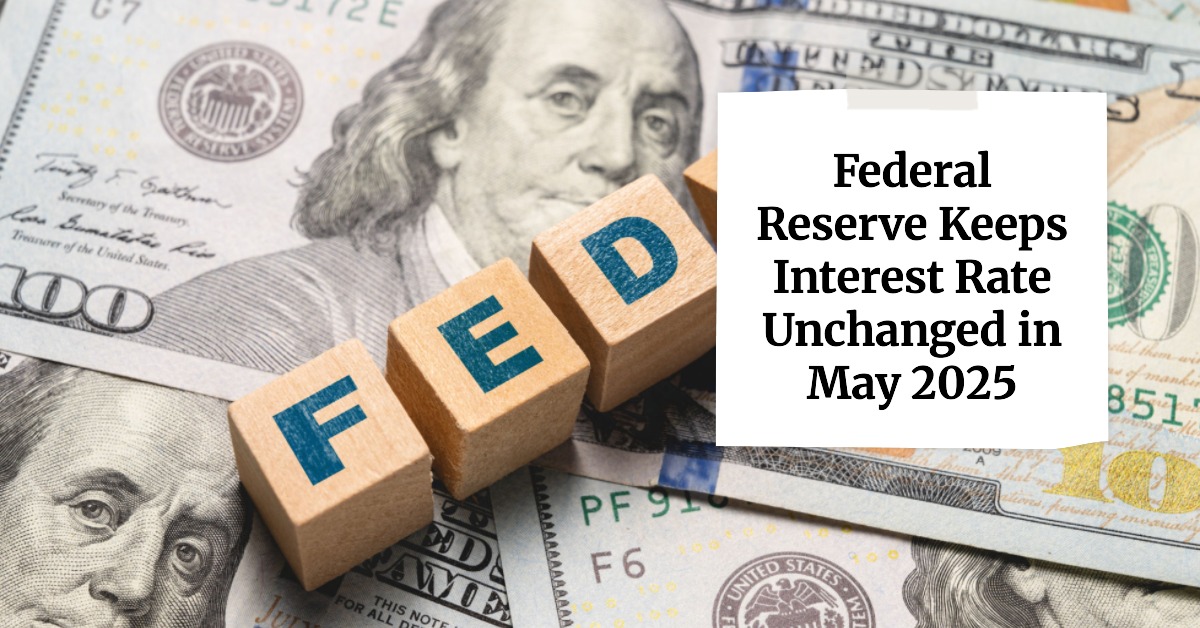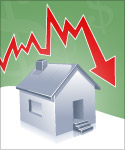On May 7, 2025, the Federal Reserve decided to keep the key interest rate unchanged, maintaining it within the target range of 4.25% to 4.5%. This decision, while seemingly straightforward, sends ripples throughout our financial world, impacting everything from the cost of borrowing for a new car to the potential for businesses to expand and create jobs.
This move by the Fed isn't entirely surprising, especially when you consider the tricky situation we're in. We're seeing an economy that's still showing signs of decent growth and a job market that, while cooling a bit, remains fairly strong. However, the elephant in the room is still inflation, which, despite some easing, remains “somewhat elevated,” as the Fed itself acknowledged.
Federal Reserve Keeps Interest Rate Unchanged in May 2025
Why the Hold? Navigating a Tightrope Walk
In my opinion, the Fed's decision to hold rates steady is a testament to the delicate balancing act they're trying to perform. They're walking a tightrope between taming inflation and avoiding a sharp economic downturn that could lead to higher unemployment. Think of it like trying to adjust the temperature in a room – you don't want to overshoot and make it too cold, just like the Fed doesn't want to raise rates too aggressively and trigger a recession.
Here are some key factors I believe contributed to this decision:
- Persistent Inflation: While inflation has come down from its peak, it's still above the Fed's comfort zone. They need more convincing data that price increases are consistently trending downwards before they consider lowering borrowing costs.
- Resilient Labor Market: The job market, despite some moderation, continues to be a source of strength in the economy. Strong employment can put upward pressure on wages and, consequently, prices. The Fed is likely waiting for more significant signs of cooling in the labor market.
- Uncertainty from Trade: The Fed specifically noted that volatile trade activity is affecting the economic data they rely on. This is a clear nod to the ongoing impact of tariffs, particularly those imposed on China. It creates a layer of uncertainty that makes it harder to predict future price movements and economic growth.
- Stagflation Concerns: The term stagflation – a nasty combination of slow economic growth and high inflation – was even highlighted by some analysts following the Fed's statement. While Fed Chair Jerome Powell didn't explicitly say they expect stagflation, the fact that the risk of both higher unemployment and higher inflation has increased is a serious concern.
The Impact on Your Wallet and the Wider Economy
So, what does this decision mean for you and the overall economy? Here’s how I see it playing out:
- Borrowing Costs Remain Elevated: For now, the cost of borrowing money for things like auto loans, credit cards, and personal loans will likely remain at their current, higher levels. This means you'll continue to pay more interest when you take out a loan.
- Mortgage Rates in Limbo: While home mortgage rates aren't directly tied to the federal funds rate, they are influenced by government borrowing costs, which have also remained high. So, don't expect any significant drop in mortgage rates in the immediate future.
- Savings Rates: On the brighter side, higher interest rates generally mean you can earn more on your savings accounts and fixed-income investments.
- Business Investment: Businesses might be more cautious about investing in new projects due to the higher cost of borrowing, potentially slowing down economic growth.
- Stock Market Volatility: The stock market is likely to remain sensitive to any news suggesting a potential shift in the Fed's stance. Uncertainty about the future path of interest rates can lead to market fluctuations.
Looking Ahead: What's Next for Interest Rates?
Predicting the future is always tricky, but based on the current economic data and the Fed's cautious tone, I believe they will likely continue to hold interest rates steady in the near term, perhaps through their next meeting in June 2025, as some analysts predict.
The big question is when, and if, the Fed will start to cut rates. In my view, this will largely depend on:
- Clear and Consistent Decline in Inflation: The Fed needs to see more concrete evidence that inflation is sustainably moving towards their 2% target.
- Cooling Labor Market: A more significant slowdown in job growth and potentially an increase in the unemployment rate could give the Fed more confidence to lower rates.
- Resolution of Trade Uncertainties: Less volatility in trade and a clearer picture of the impact of tariffs would reduce some of the economic uncertainty.
Differing Perspectives and the Tariff Wildcard
It's important to remember that not everyone at the Fed agrees on the best course of action. Some officials might be more inclined to start cutting rates sooner, especially if they believe that the price pressures from tariffs will be temporary.
Adding another layer of complexity is the stance of the Trump administration on tariffs. As we saw just before the Fed's announcement, there's no indication that these tariffs will be rolled back anytime soon. This creates a unique challenge for the Fed, as tariffs can lead to higher prices for consumers and businesses, potentially fueling inflation. Fed Chair Powell himself acknowledged that the inflationary impact of tariffs could be either short-lived or long-lasting, depending on their extent and duration.
The Crucial Role of Consumer Spending
One of the most important factors keeping the economy afloat right now is the resilience of American consumers. Despite higher prices and borrowing costs, people are still spending. As one market strategist pointed out, even as big institutional investors might be selling, individual retail investors have been net buyers of stocks for a record number of weeks. This suggests a fundamental belief in the long-term prospects of the market and a willingness to keep their money invested. This continued consumer demand is a key factor the Fed will be watching closely.
My Takeaway: Patience and Vigilance
In my expert opinion, the Federal Reserve is right to be patient at this juncture. Rushing to cut interest rates prematurely could risk reigniting inflationary pressures, which would ultimately be more damaging to the economy in the long run. Conversely, raising rates too aggressively could stifle economic growth and lead to unnecessary job losses.
The current situation demands a data-dependent approach. The Fed needs to carefully monitor inflation, the labor market, and the impact of trade policies before making any significant moves. As an observer of the economic scene, I anticipate a period of continued vigilance and careful deliberation from the central bank. The path forward is uncertain, but the Fed's commitment to both price stability and maximum employment will guide their decisions in the months to come.
“Turnkey Real Estate Investing With Norada”
With the Fed decision looming, investors are seeking stability and strong returns from real assets.
Norada offers carefully selected, cash-flowing investment properties—perfect for navigating uncertain markets.
Over “100” HOT NEW LISTINGS JUST ADDED!
Talk to a Norada investment counselor today (No Obligation):
(800) 611-3060
Recommended Read:
- Interest Rate Predictions for Next 2 Years: Expert Forecast
- Fed Holds Interest Rates But Lowers Economic Forecast for 2025
- Fed Indicates No Rush to Cut Interest Rates as Policy Shifts Loom in 2025
- Fed's Powell Hints of Slow Interest Rate Cuts Amid Stubborn Inflation
- Fed Funds Rate Forecast 2025-2026: What to Expect?
- Interest Rate Predictions for 2025 and 2026 by NAR Chief
- Market Reactions: How Investors Should Prepare for Interest Rate Cut
- Interest Rate Predictions for the Next 3 Years
- Impact of Interest Rate Cut on Mortgages, Car Loans, and Your Wallet
- Interest Rate Predictions for Next 10 Years: Long-Term Outlook
- When is the Next Fed Meeting on Interest Rates?
- Interest Rate Cuts: Citi vs. JP Morgan – Who is Right on Predictions?
- More Predictions Point Towards Higher for Longer Interest Rates



